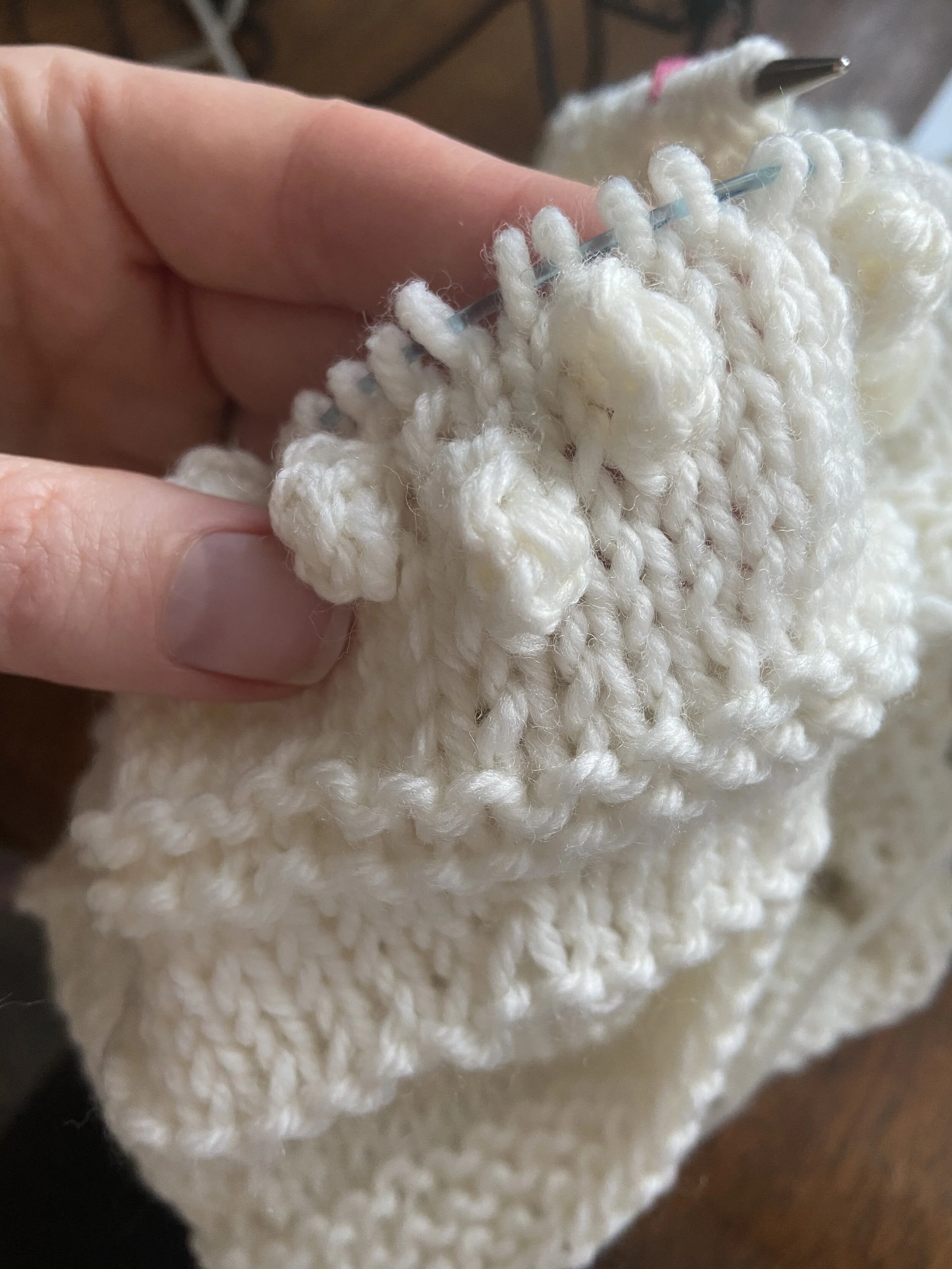Invisible progress is still progress
The Appalachian Mountains are smaller than the Rockies because they are older. (Image by Mary Whalen)
I’m in the midst of knitting a sweater with lots of bobbles. Eighty-four of them, to be precise.
I’m counting because I’m desperate to be done with the dang bobbles. I guess I forgot how much I hate them. A single bobble requires that you first knit into one stitch three times. Then, you take those three stitches and work each of them again. Then again, and then again, and finally your misery is over and you turn the three stitches back into one, resulting in the finished bobble:
Don’t feel too sorry for me, though. I chose this. I chose knitting as a hobby, I chose this particular pattern, and I chose to spend my time this way on this particular night, bobbling away while half-watching a Star Trek episode featuring an evil Spock (you know he’s evil because he has a goatee).
One of the things I enjoy so much about knitting is the sense of visible progress. You’re actually making something, stitch by stitch, which is a novelty for someone whose work has mostly consisted of making music, interacting with people, and sending lots of emails.
That’s why the bobbles are frustrating. They’re a lot of work, and at the end, I’ve worked one stitch. I haven’t advanced. The sweater hasn’t grown any bigger.
Luckily, visible results are not the only way of measuring progress. However, it can indeed be demoralizing when we are seeking visible results and can't find any. When we don't have another way of measuring our progress and we only know to look for visible results, what do we do?
This is where it can be very helpful to have a guide along the way -- usually a teacher, a coach, or an accountability partner. These are people who can help you by reflecting your progress back to you. They might be able to see tiny increments of progress where you don't. What’s more, if they have greater expertise in the subject under study, they might be able to point to ways that you are laying the groundwork for visible progress that will come later.
For example, I've written about helping guitar students to learn how to switch chords more quickly. This is a fundamental challenge for aspiring guitarists and an area where many get stuck. Instead of encouraging my students to simply practice the chords over and over, which is boring and yields little in the way of visible results, I teach my students to use a metronome. With this tool, we can measure tiny increments of tempo that are not perceptible otherwise. In addition, measuring the tempo allows us to pay attention to the way it feels when we play. We can maintain the same tempo and observe that we are getting more comfortable as we practice. We might improve our technique and tone, getting improved results with less effort. We haven't gotten any faster, but we are getting better. And if someone else isn't around to point that out to us, we can make use of recordings to help us acknowledge how far we've come.
Then we have a new problem, which is that the inexperienced player can't necessarily hear the difference between the two recordings she's made -- not yet, anyway. This points to another area of growth: The guitarist can look for an improvement in her ability to pick out the nuances of her recorded performances and begin to hear subtle changes in rhythm, tone, and artistry.
Even when we have the support and guidance of an experienced professional, however, we may have trouble trusting that the process will work for us. This skepticism is part of the learning. Indeed, part of what we're developing when we undertake a challenging task is the discipline to persist even when it's not fun and we're not seeing any visible growth. As long as we stay the course, it’s inevitable that we will get better, even if we don't see it right away. In the meantime, we're strengthening our fortitude, our resolve, and our perseverance -- that’s progress, too.
The process of growth has its plateaus, its periods of wandering in the dark, and the times when we feel like we’re sliding backward. There are also the magical moments where everything comes together. Slow or invisible progress — or even having to do everything over again because you messed it up — are not indicators of failure or evidence that you’re not cut out for this. They’re a normal part of the process.
Now if you’ll excuse me, I have 24 more bobbles to do. And after that, the rest of the sweater will feel so easy.






